
Springfield Armory has recently launched their SAINT line of firearms which are high end ARs. The Victor 308 is the harder hitting offering as it is chambered in the .308 Winchester cartridge as opposed to the .223 Remington. However, the Victor 308 is built specially to handle like the typical AR-15 even though it is constructed on the more robust AR-10 platform. (AR-10 is a generalized term. I realize it is not entirely accurate.) This is perfect for anyone who wants a large caliber and is going to be carrying the rifle for an extended period of time whether it be in a backpack, on a sling, or in the hand.
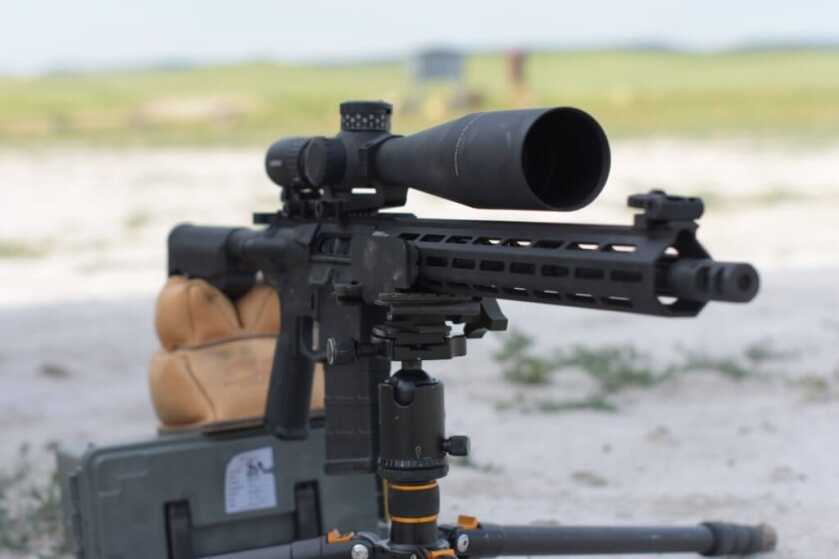
First Impressions:
Because of specific design features such as the lightweight barrel, short overall length, pinned gas block and trigger choice I would classify this rifle as a “battle rifle,” much as the title states. By this, I mean that the primary consumer target would be LEO and tactical range enthusiasts who demand maximum mobility, minimum weight and lots of stopping power without the accompanying recoil. This said, my opinion jibes with the intent of Springfield who states on their website, “The SAINT Victor series of rifles and pistols from Springfield Armory are designed as purpose built defensive firearms…”
SEE ALSO: Springfield Armory’s New Saint Victor Pistol is a .308

Once I picked up this rifle and started running through it, I was very impressed. It has every feature that a person would want if they were to custom build their own such as the end plate QD mount, flat combat trigger, lightweight barrel, pinned adjustable gas block, effective muzzle brake and many others. This rifle is particularly lightweight, but the receiver is standard Mil-Spec dimensions and doesn’t appear to have any extra weight relieving cuts. That said, the weight from this rifle is reduced through the use of a 16″ light profile barrel as well as removing a large section of the picatinny rail on the handguard.
Interesting Features:
The Springfield SAINT Victor 308 is absolutely packed with features. Many of these are becoming common so I want to specifically address the more subtle, noteworthy ones. From back to front, the lower receiver comes with Springfield’s Accu-Tite tension system. This is basically a small plastic tipped set screw in the back of the receiver that puts upward pressure on the upper receiver and locks it in place against the rear takedown pin. This eliminates any sloppy, wobbly feel between the upper and lower that is pretty inherent in the AR design.

The Trigger that SA chose to use in the Victor is also high end. All of these parts are coated in Nickel Boron which creates a corrosion resistant, near frictionless surface that results in a smooth trigger pull. The specs that I have found have not specified the weight of this trigger pull, but I measured mine to average 5.75 pounds using a Wheeler Engineering trigger pull gauge. This would be heavy for a rifle if it were designed for hunting or target shooting, but considering the intended use I find it appropriate. There is a small amount of creep, but I found there to be zero overtravel or take-up.
Moving forward, the adjustable gas block is totally unique to anything that I am aware of. The set screw on the front of the gas block is interchangeable with an adjustable set screw, which makes it function much the same way that existing adjustable gas blocks on the market do. This gas block is interesting to me because this set screw is also interchangeable with 3 supplied metering jet screws. The metering jet screws are hollow, which allows excess pressure to be let off out the front of the gas block. Because they come in three different jet diameters (the smallest letting off less gas, keeping the pressure high and the largest letting off more gas which lowers the pressure), I was able to fine-tune the amount of gas in the system unique to the ammunition I was using. I found that the green set screw (with a jet nozzle of 0.062 diameter) worked best with what I was using and ran it for most of my testing.
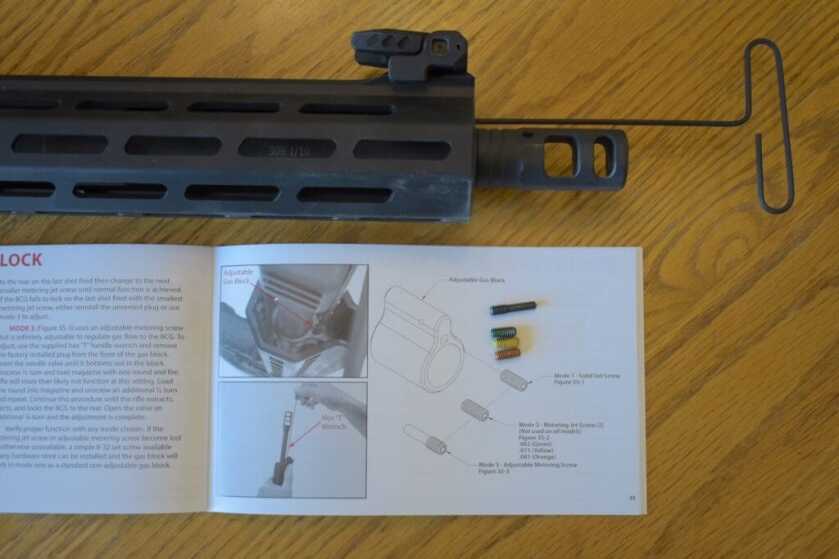
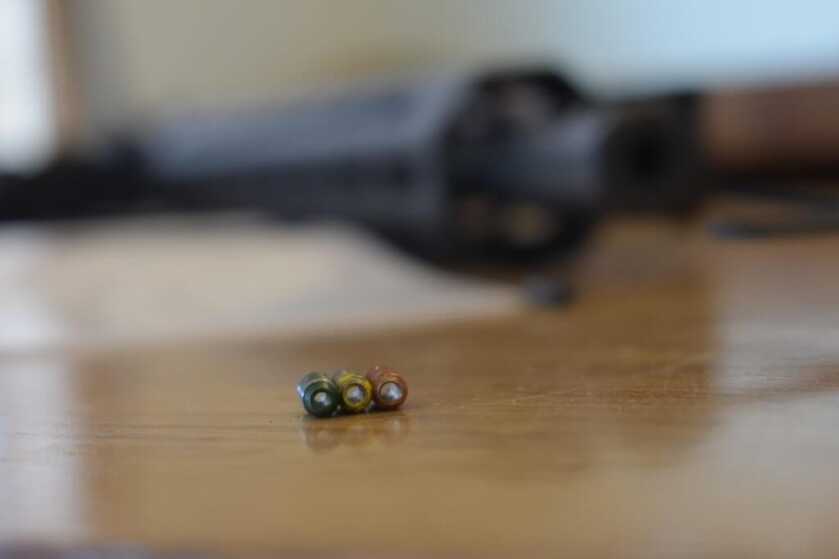
And now, of course, the muzzle brake. There is a lot of muzzle brake designs out there that are totally uninteresting to me because I know what is effective and what isn’t. Even before I shot this rifle, I could tell at a glance that this muzzle brake is very effective and it was going to aid in keeping me on target through a course of fire. After shooting the Victor 308, I can attest that with its large ports and top vents, the SA brake eliminated or greatly reduced muzzle rise as well as lowered the recoil impulse to little or none for a .308 Winchester.
I’ll rapid fire through the other noteworthy features and leave the rest for the specs sheet. The Victor 308 comes with a Magpul Gen M3 20 round magazine, Bravo Company 6-position stock and MOD.3 pistol grip, spring loaded flip up iron sights, Melonite coated bolt carrier, GI charging handle and 15″ M-Lok free-float handguard with SA locking tabs and M-Lok slots at the 2,3,4,6,8, & 10:00 position. Now that I’ve successfully created the world’s longest run-on sentence, let’s continue on to the accuracy testing results.

Accuracy
There are a few trade-offs between reliability and mobility when compared to accuracy. Pinning the gas block creates stress within the bore of the rifle barrel and in most cases deforms the bore enough that it is measurable with proper tools. This, as you can imagine, is not conducive for accuracy. However, pinning the gas block basically guarantees that it will not move and you will not have any gas block related malfunctions. Also, having a light barrel does not add to accuracy and I will argue this with anyone that says “But I have a lightweight rifle that shoots lights out.” The thinner profile has more extreme barrel harmonics which are generally detrimental to precision.

All of this said, The Victor 308 does pretty good, averaging under 1.5 MOA with a variety of different ammunition brands and weight bullets. For the accuracy tests, I installed a Leupold MK5 HD 5-25×56 riflescope and shot at a distance of 105 yards. I’ll post pictures of my results from the test below:
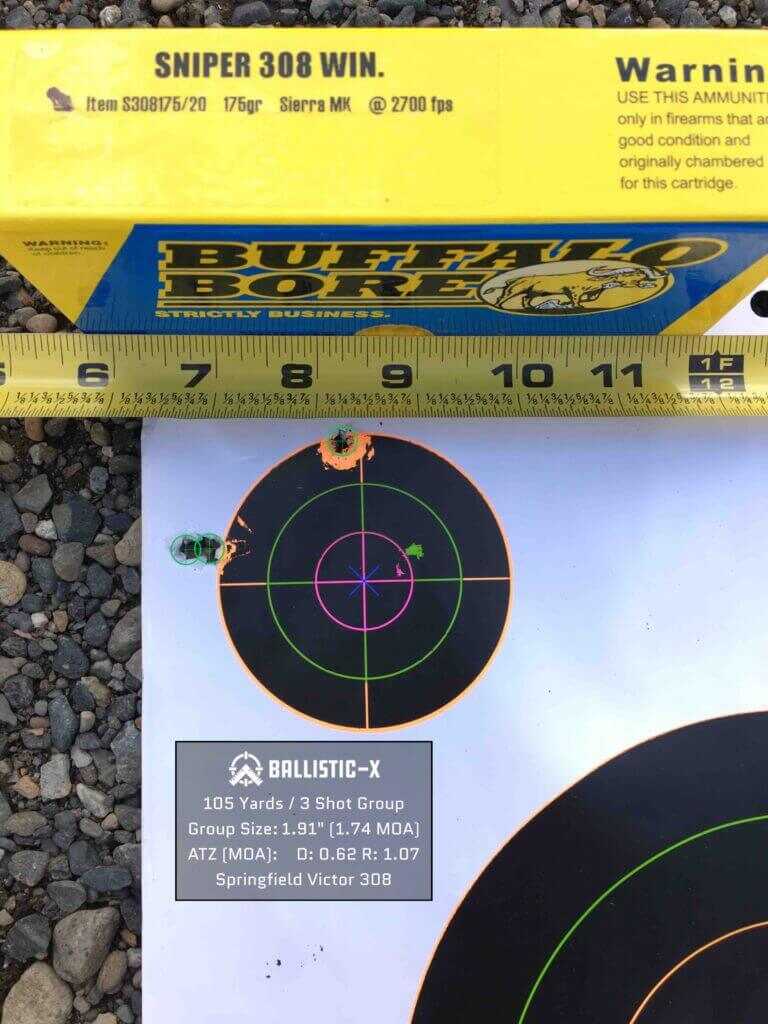


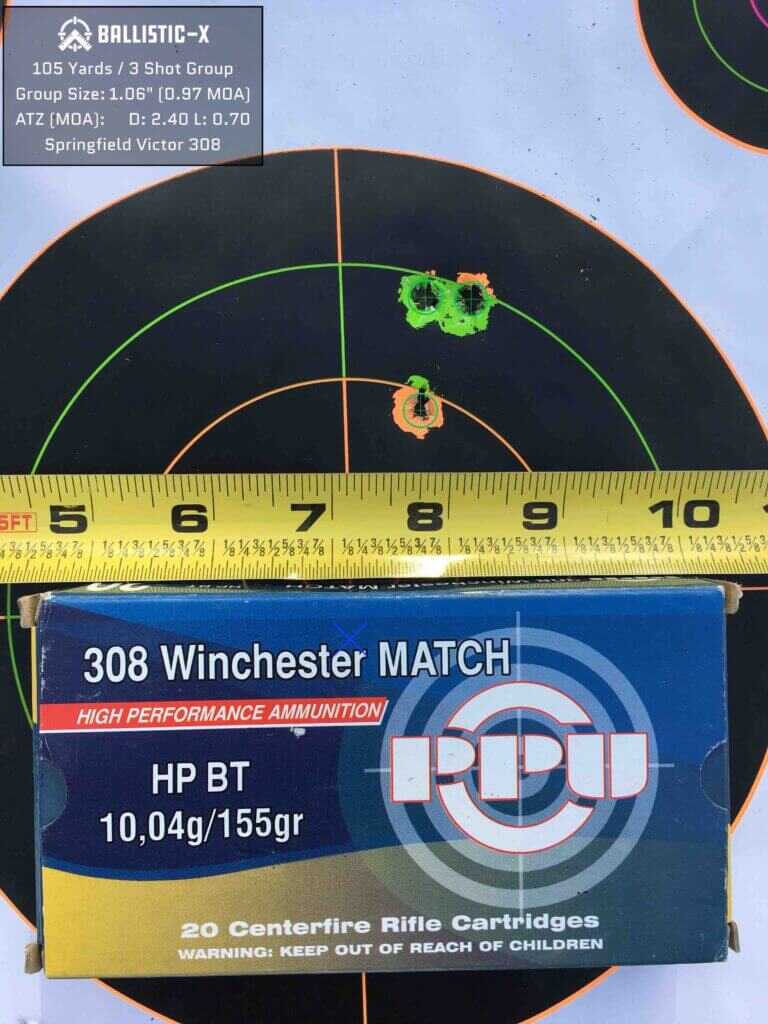
In Review
The Springfield SAINT Victor 308 is built for a purpose in mind and that is to be a lightweight run and gun type rifle that offers more firepower than the typical AR-15. Its MSRP of $1,399 makes it a more affordable offering of this platform that is out there, especially with the features that it has. I expect to see this rifle in most stores around $1,100. At the end of the day, this rifle doesn’t quite fit my long range precision rifle fetish, but it is still a ton of fun to take to the range and do some chemistry with. And for what it is designed, it may be the best AR chambered in the popular 308 Winchester on the market at its price point. I would not hesitate to recommend the Springfield Armory SAINT Victor 308 to anybody looking for a fun, lightweight range gun or even someone looking for a lightweight, hard-hitting, mid-range semi-auto hunting rifle.
SPECIFICATIONS
- Chambered in .308 Winchester
- Barrel 16″ Lightweight Profile, CMV Melonite® Finish Internal & External, 1:10
- Spring-loaded flip up sights with dual rear aperture
- Trigger Enhanced Nickel Boron Coated Single Stage Flat
- Lower Receiver Forged Type III Hard Coat Anodized, 7075 T6 Aluminum w/ Accu-Tite™ Tension System
- Gas System Direct Impingement Mid-Length, Pinned Gas Block
- Bolt Carrier Group MPT, Melonite® Finish w/ 9310 Steel Bolt
- Charging Handle GI Style
- Safety 90 Degree Single Sided
- Pistol Grip Bravo Company Mod.3
- Weight 7 lbs 11 oz
- Magazine (1) 20-Round Magpul Gen M3
- Muzzle Device SA Muzzle Brake
- Upper Receiver Forged Type III Hard Coat Anodized, 7075 T6 Aluminum
- Handguard 15″ M-Lok Aluminum Free Float w/ SA Locking Tabs
- Buffer Assembly Carbine “H” Heavy Tungsten Buffer
- Receiver Extension Mil-Spec Dimension Carbine, 7075 T6 Type III Hard Anodized Aluminum
- Butt Stock Bravo Company 6-Position
- integral trigger guard
- Length 37.75″ Fully Extended, 34.5″ Collapsed
- $1,399 MSRP
Visit Springfield Armory to learn more by clicking HERE.
Additional Pictures:
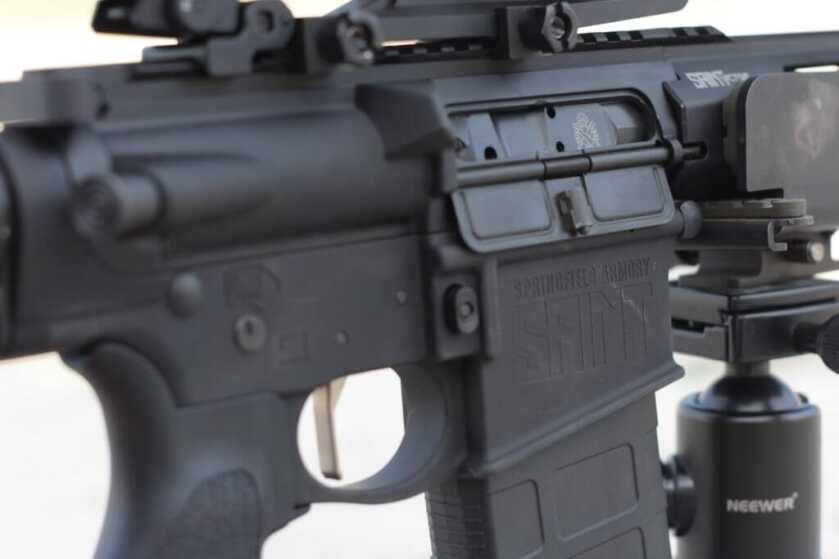
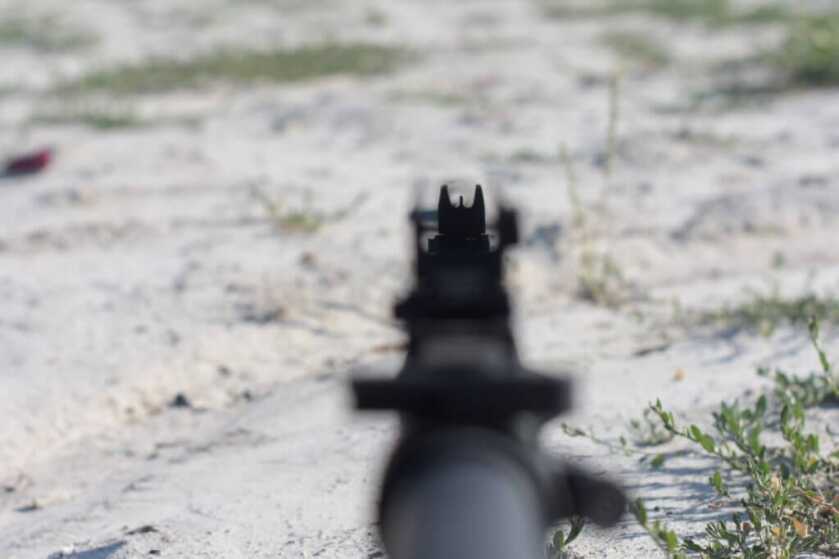

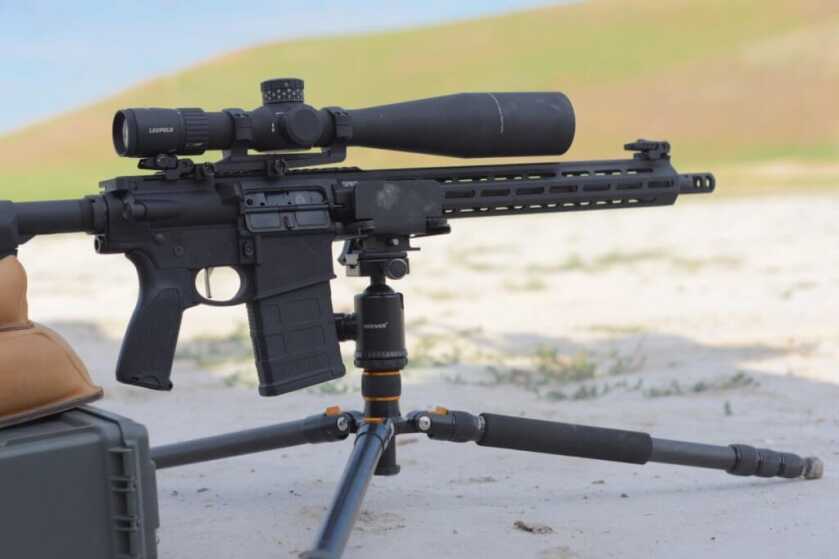


Great write-up. Does include a huge pet peeve of mine, being on the retail side, and that’s when gun writers pick some number they think the “street price” will be on a given item. There’s almost no percentage markup in firearms as it is compared with all other retail, please don’t set expectations with my clients that I’m content to sell firearms at some number you pulled out of who knows where. Someone somewhere will sell it for 5% over cost, but it probably won’t be a retail brick and mortar store.
I just bought a Saint in 308. Mine did not come with the wrench or metering screws. I have barely had it out of the box 24 hours and have not shot it yet. Hopefully SA customer service can help.
SA customer service did respond, was friendly and quick and sent me the missing parts.
I talked to Springfield, and I was informed that “everything” was proprietary. I’m thinking about getting a Stag, the upper and lower are proprietary, but all parts are DPMS.
Would love to know what shots were first to third,,,you have two that are very good,,then looks like a flier,,or just a touch but all the same in all your photos,,,one is great,,like .50 inch…
I did not notice a trend in the “flyers” that you noticed. If you are suggesting that the rifle shoots better than I am capable, that is fair enough. I would suggest that you check out a few of my other articles where groups I’ve shot are shown if you want confidence in my shooting. You can also compare my results to what other reviews are showing. I have found that they yield similar results.
Don’t get excited Riley.
Reading into Douglas’s comment I see no condemnation of your abilities.
Flyers can be caused by many factors.
I blame them on the initial soft chambering of the charging handle.
I don’t see tactical utility in an adjustable gas port that requires metering valve changes using a seperate long reach tool! Same ammo with a “in-use” dirty gun could use a quick fix: more gas but not with this system. One valve with 3 or 4 positions and adjustable with a cartridge bullet point is much better! There have been adjustable gas piston rifles for decades that aren’t patent protected any longer. For tactically promoted as “Run and Gun”: this design is crappy, better ways to do it IMHO.
Agreed. Savage MSR-10 Hunter is what you seek. 😉
Armalite? DPMS-LR308?
Robar NP3 coatings are far superior to the Boron Nickel Nitride coatings for wear and lubricity .. Run and Gun weapons should be gas piston vs. direct impingement guns .. The POF 308 has both of these upgrades and is 8.5 lbs .. The POF 308 has the same lenght bolt carrier group as the AR-15 .. So the gun is more compact and more suited for run an gun .. The POF Revolution comes standard with a 16.5″ barrel .. I believe the POF’s to be a bit pricey but well worth it for the gun you get ..
Also I hear from some experienced operators that the .308 is a bit heavy as a run and gun weapon, maybe more suited to overwatch operations. JS
OK so it’s an affordable .308 I guess that’s a good thing personally I like my Sig 716, but the inherrent loose fit of uppers and lowers is a kinda lame concept I’ve put two m4 style ar’s together fwith random mil spec components and they fit like a glove , no set screw needed, the only time I’ve seen lose fits have been on very cheap guns.